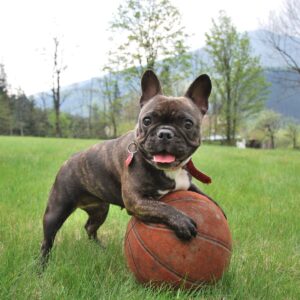
Getting your dog to do what you want can be a challenge without a dog training plan. You can scream and shout all you like, but your pooch will rarely listen to you. Fundamentally, they haven’t got a clue what you are saying. All of this can make owners feel exasperated. They expect dogs to follow their instructions, so when they don’t, it’s a disappointment. It’s worth remembering, though, that dogs’ language revolves around food, not words, according to https://www.companionanimalpsychology.com/2021/04/how-to-prioritize-training-for-new.html. As such, if you want to get them to do something, you’ll want to figure out a way of associating it with a tasty treat. If you don’t, you’ll wind up going around in circles for years, and nothing will ever improve.
Here are some tips to teach your new dog old tricks so you can put together a dog training plan. Check them out below.
Discourage Jumping Immediately
Dogs are boisterous and excitable creatures. Whenever they meet someone new, their first instinct is to jump up and hug them.
Puppies will do this without any training or encouragement from other dogs. It’s just a part of their nature.
Unfortunately, jumping is a problem. It’s bad behavior and can make some guests feel uncomfortable. They may worry about visiting your house if the dog isn’t under control.
Never reward jumping with your attention. If your dog does it, simply turn around and say nothing. Do not reprimand your dog as this may cause trauma or could become a form of reinforcement. Don’t pat or praise your dog if they are in the jumping up position either, even if it is in a different context.
Get Them To Learn The Word “No” For Biting And Nipping
Young dogs, particularly puppies, are prone to biting. As their adult teeth come through, they want something to chew on, just like human children.
When this happens, you’ll want to use the word “no” and pretend that you are in a lot of pain when they do it. Yelping loudly will often do the trick. This will take dogs by surprise and most will stop biting immediately.
If you haven’t taught your dog the meaning of “no” yet, there are alternative strategies you can use to discourage the behavior. Giving them a chew toy instead, for instance, is a type of reward, and may cause them to develop different habits.
Choose A Name That’s Suitable For Training
Picking an unusual or unique name for your dog can be a lot of fun. However, you’ll need to be careful about the type of name you choose. Some are better for training than others.
It helps to have a short, sharp name with consonants that dogs can hear clearly. Names like “Ian” and “Paul” aren’t as good as “Bojack'' or “Conrad.” Puppies tend to be better able to detect strong endings than weaker ones.
If your new dog is an adult, then they are probably used to their name already. However, changing it is possible. In fact, if the new pooch is a rescue animal, giving them a new name is a great way to help them make a fresh start in life.
Remember, dogs don’t have egos, so there is no attachment to their names. They just go through life accepting whatever happens. A new name is no more jarring for them than a new house.
Short, sharp names are also the most convenient for you during training. Names with one or two syllables are infinitely preferable to those with four or five. “Max” is good, but “Maximilian” is not.
Set Out Your House Rules
Ideally, you should set house rules the moment your new dog comes home to live with you. There should be no ambiguity.
As an owner, it is up to you what you let your dog do on your property. Some forbid dogs from going upstairs, while others do not allow them onto the couch.
When it comes to house rules, you need to be careful. Giving your dog too much liberty can leave them under the impression that they are in charge, not you. Consequently, their behavior can deteriorate.
Likewise, you don’t want your rules to be too strict. Dogs should feel like they are at home, not just on probation.
If you notice your dog is breaking your house rules, address the issue immediately. Don’t wait for later, even if it is their first time coming back to live with you. If you allow bad behavior to occur, it will likely repeat.
Make Sure That Your Dog Is Healthy
If your dog is sick or has bad joints, as explained by https://chocolatelabradorretriever.ca/glucosamine-and-chondroitin-for-dogs-how-to-handle-joint-health/, they can be harder to train. They have less motivation, and running around can cause pain. Therefore, you’ll want to deal with any health issues as quickly as you can.
Discomfort is a major demotivator for dogs. If they have a health problem, they won’t respond to your commands, even if you offer food or take them out on walkies.
Give Your Dog Space To Relax
Dogs, just like people, need time-out from the pressures of life. They need to feel like they can completely switch off and still be safe.
Therefore, when you bring your new dog home, provide them with a hot water bottle, a dog bed, and plenty of blankets to keep them warm if you live in a cooler climate.
Providing space for dogs that had a rough history or lived in a busy shelter helps them to focus more on training. They have more balance in their life between stimulation and rest, and they don’t feel the need to be on the go all the time.
Giving your dog a private den (away from humans) is another great way to get them to feel happier and more relaxed in the home. Offering them a crate where they can go to be alone can be highly beneficial and help when it comes to training. After being by themselves for a while and recharging their batteries, most dogs are ready to face the challenges of the day, whatever they might happen to be.
Get Your Dog To Come When You Call
Getting your dog to come when you call is important for many reasons, including their safety. To start this training, call your dog using its name. Say something like “Bojack, come.”
If your dog comes over to you, give them a treat or a toy. You may have to wait a while for your dog to come, but once they do, you can reward them. Over time, your pup will learn what comes means, allowing you to drop their name from the instruction. Eventually, you can withdraw treats entirely and your dog will still obey you.
Keep Training Short And Sweet
People struggle to sit through hour-long training sessions without falling asleep. Therefore, as you might imagine, it is even harder for dogs. “Dog time” is not the same as “human time.” Dogs’ clocks run much faster.
Ideally, keep your training sessions to two minutes or less but repeat them often throughout the day. For example, if your dog comes to you when you say “come,” give them a treat and leave it at that. Then wait an hour, and do the same thing again, continuing to repeat the process throughout the day.
The more you can repeat the learning experience, the more likely your dog will be to remember it.
End Training On A Positive
Lastly, always make sure that you end training on a positive note, offering your dog plenty of praise and reinforcement. You want them showing up to each training class happy to get started.
If you found this post useful, share it with your friends and Pin it for later...

You might also like these posts...


















Leave a Reply